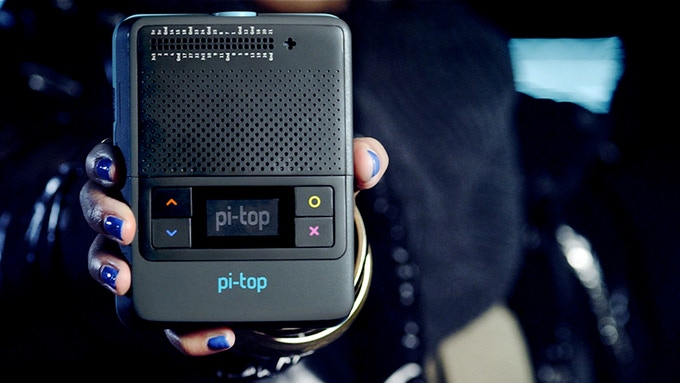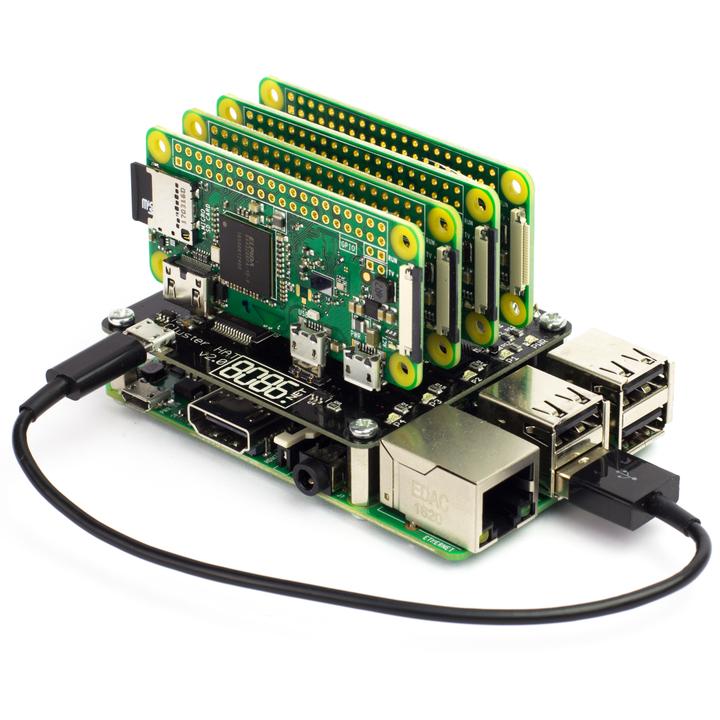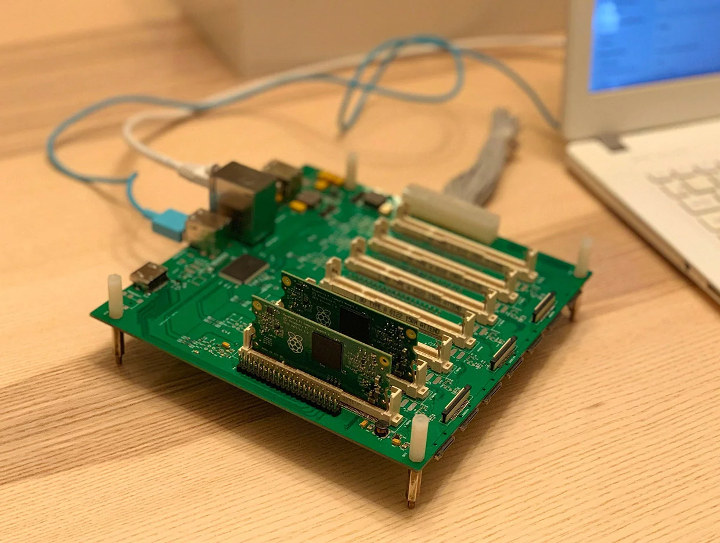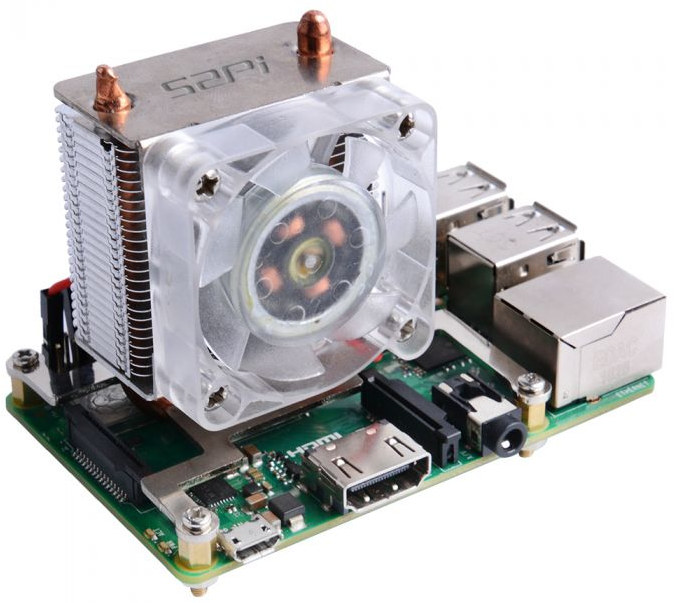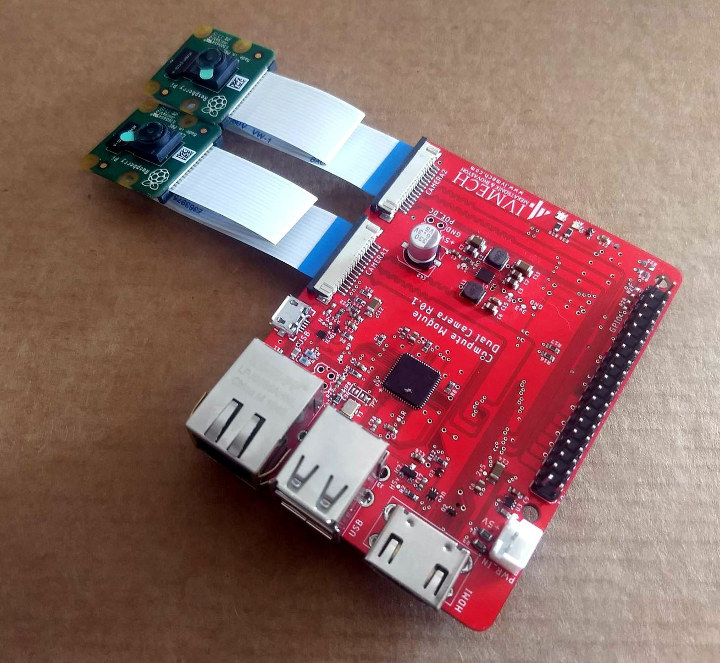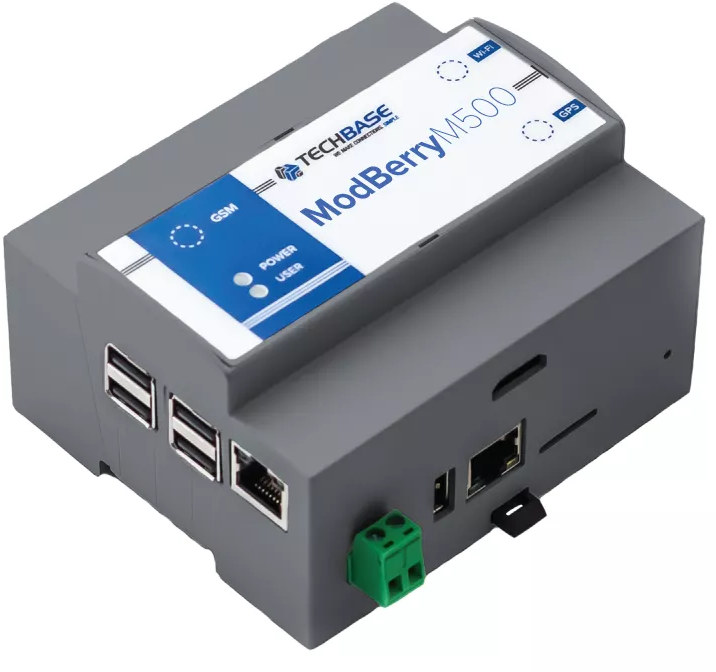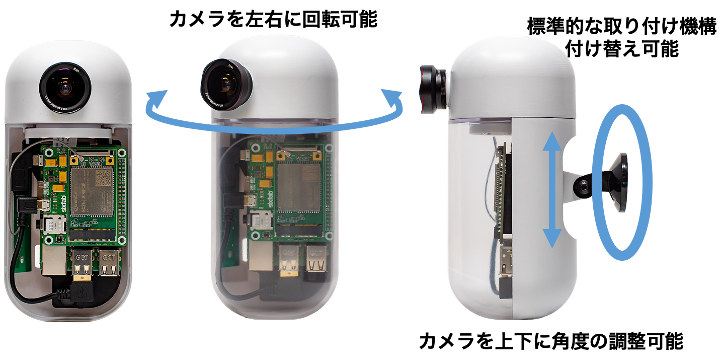Arm TechCon will take place on October 8-10, 2019 at San Jose Convention Center to showcase new solutions from Arm and third-parties, and the company has now published the agenda/schedule for the event. There are many sessions and even if you’re not going to happen it’s always useful to checkout what will be discussed to learn more about what’s going on currently and what will be the focus in the near future for Arm development. Several sessions normally occur at the same time, so as usual I’ll make my own virtual schedule with the ones I find most relevant. Tuesday, October 8 09:00 – 09:50 – Open Source ML is rapidly advancing. How can you benefit? by Markus Levy, Director of AI and Machine Learning Technologies, NXP Over the last two years and still continuing, machine learning applications have benefited tremendously from the growing number of open source frameworks, tools, […]
pi-top[4] Raspberry Pi 4 based mini PC has launched on Kickstarter for $199
The announcement about the pi-top [4] came out a short time ago, as a portable mini-pc running the Raspberry Pi 4 board, and plans of package deals for backers on Kickstarter. The campaign started on July 9 2019 and was fully funded within 4 hours. Pi-top has now set a new goal featuring several price packages, each with features, applications and components that expand on what was reported in the original article covering the pi-top [4] mini-pc. The Main Campaign and Company Pi-top is based in Austin and Brownsville Texas. They produce hardware, software and project kits based around the Raspberry Pi family of boards. The latest device is an expandable and multi-purpose platform mini-PC based on the Raspberry Pi 4, and enhanced by sensors, LED’s, components and software. The Kickstarter campaign has already been funded, and there are now a stretch goal and three packages being offered. The pi-top […]
Cluster HAT Interfaces up to 4 Raspberry Pi Zero to Raspberry Pi 2/3/4 Board
Cluster HAT is a solution to the problem of building cluster computing. Distributed computing is difficult already, and this tiny hardware kit is one answer to the problem. Although building a computer cluster is not that easy, it is one of the most impressive Raspberry Pi projects. Why Cluster HAT? The Cluster HAT (Hardware Attached on Top) interfaces a (Controller) Raspberry Pi A+/B+/2/3/4 with 4 Raspberry Pi Zeros. It is configured to use USB Gadget mode. Also, it is an ideal tool for teaching, testing or simulating small scale clusters. Cluster HAT leverages the flexibility of Raspberry Pi by allowing programmers to experiment with cluster computing. It is important you know that the HAT does not come with a Raspberry Pi or Pi Zero. The two are purchased separately. Pimoroni, the manufacturer, provides assembly and control instructions on its product page. Also, they explain 3 ways of setting up the […]
Turing Pi Clusterboard Takes up to 7 Raspberry Pi Compute Modules
We’ve already covered several cluster solutions based on Raspberry Pi boards such as Bitscope Blade with up to 40 Raspberry Pi boards, a 16 Raspberry Pi Zero cluster board prototype, Circumference “datacenter-in-a-box” with up to 32 Raspberry Pi 3 B+ boards. If you want something more compact, it makes sense to develop a platform with Raspberry Pi Compute Modules instead, and we’ve already published news about MiniNodes Raspberry Pi 3 CoM Carrier Board that supports up to to 5 Compute Modules 3/3+ last year. There’s now another option with Turing Pi Clusterboard support up to 7 Compute Modules for applications leveraging Kubernetes, Docker, Jupyter Notebook, machine learning (TensorFlow/Caffe), and serverless stack. Turing Pi specifications: 7x Sockets for Raspberry Pi Compute Module 3/3+ Storage – 7x microSD card slots Video Output – 1x HDMI port, MIPI DSI connector Audio – 1x 3.5mm audio jack Camera I/F – 2x MIPI CSI connectors […]
$20 ICE Tower CPU Cooling Fan Targets Raspberry Pi 4
The Raspberry Pi 4 is much more powerful than its predecessors, but with great power comes a lot of heat, and it may affect the performance of your board under leaod. We’ve already seen that fitting a heatsink to Raspberry Pi 4 does help, and provided it’s sized appropriately, should help you board work at its full potential in most circumstances. The Raspberry Pi Foundation is also working on improved firmware to lower temperature and power consumption of their latest single board computer, but if you want to make sure your board stays cool at all times: ICE Tower CPU cooling fan will certainly do the trick. It’s fitted to a Raspberry Pi 3 board in the photo above, but Seeed Studio reports it’s compatible with Raspberry Pi 4, and can reduce the temperature of the Raspberry Pi from 80°C to 40°C. It’s actually compatible with all recent Raspberry Pi […]
Ivport Stereo CM Breakout board for Raspberry Pi Compute Module Supports Two Cameras
We’ve previously written about IVport V2 camera multiplexer board that can connect up to 16 cameras to a single Raspberry Pi board in order to create 360 degrees camera setups for example. The company also offered a version with two cameras for stereo recording and capturing modes. But if you’d rather use a Raspberry Pi Compute Module with or without eMMC flash, and use either Raspberry Pi camera V1 or V2, the company has launched Ivport Stereo CM breakout board with support for up to two cameras and exposing some extra ports. Ivport Stereo CM specifications: RPi module compatibility Raspberry Pi CM1 Raspberry Pi CM3 (eMMC equipped) Raspberry Pi CM3 Lite Raspberry Pi CM3+ (eMMC equipped) Raspberry Pi CM3+ Lite RPi camera compatibility Raspberry Pi Camera Module V1.3 (OV5647 sensor) Raspberry Pi Camera Module V2 (Sony IMX 219 sensor) Storage – microSD slot Video Output – HDMI Networking – 10/100M […]
ModBerry M500 Industrial Computer Gets Upgraded to Raspberry Pi 4
We first wrote about Modberry M500 industrial computer when it was upgraded from Raspberry Pi 3 to Raspberry Pi 3 B+, and added PoE support. With the launch of Raspberry Pi 4 model B, it should come as no surprise that Techbase has now announced Modberry M500 would be available with the latest board from the Raspberry Pi Foundation. Modberry M500 RPI 4 preliminary specifications: SoC – Broadcom BCM2711B0 quad-core Arm Cortex-A72 processor @ 1.5 GHz with VideoCore VI GPU System Memory – 1GB, 2GB or 4GB LPDDR4 Storage – 4GB eMMC flash (TBC), and/or 8GB micro SD card Video & Audio Output – HDMI 2.0 up to 4K @ 60Hz and 3.5mm jack for CVBS (composite + stereo audio) Connectivity True Gigabit Ethernet, up to 2x optional 10/100M Ethernet ports Dual band 802.11 b/g/n WiFi and Bluetooth 5.0 LE Optional Zigbee, LTE/3G, GPS, WiFi, and Bluetooth cards USB – […]
S+ Camera Basic Combines Raspberry Pi 3 Board and LTE Shield for Edge Applications
Soracom is a company that provides global IoT network cellular connectivity for businesses in smart IoT agriculture, energy, consumer, manufacturing, transportation, and medical industries, and even provides free IoT SIM cards for evaluation (US/Canada only). The company has just announced the S+ Camera on its Japanese blog. The camera looks to features several off-the-shelf components including a Raspberry Pi 3 board and SixFab Raspberry Pi 3G-4G/LTE Base Shield V2 connecting to Soramcom network. It’s a little confusing as to why a cellular IoT company would develop an LTE camera since streaming video requires bitrates not normally associated with IoT. The blog post does provide a few more details however, as S + Camera is said to run SORACOM Mosaic software which enables “algorithms for edge processing cameras and management and operation of cameras”. That means it’s quite possible the video will not be streamed, but edge processing/computing usually means AI is […]



